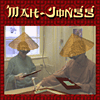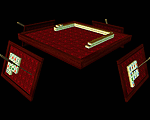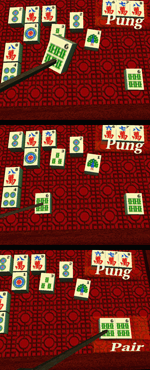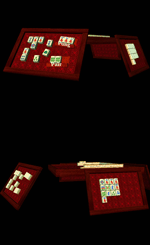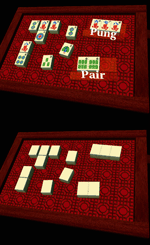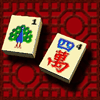
Mah-Jongg
Collaborative Gaming in Augmented Reality
Project duration: 1998-
Contact: Zsolt Szalavári
Description
Application
We have selected Mah-Jongg as the major implementation example of our concepts on augmented gaming, because it is known world-wide, the main rules are easy to understand, and many of our system features can be presented with it.
Problems
Approach
Face snapping mechanisms ease manipulation of game tiles and help to overcome the limited precision of the input devices both in the absolute and the two-handed relative frame of reference of the common table.
A powerful automatic privacy combined with layering mechanism takes care of sequrity management. Thus player clients render customized versions of the common scene graph with only a single player_id identification. Using this mechanism additional help information is integrated on demand in specific views.
Publications

- Collaborative Gaming in
Augmented Reality
Zsolt Szalavári, Erik Eckstein, Michael Gervautz
appeared in Proceedings of VRST'98, pp.195-204, Taipei, Taiwan, November 2-5, 1998
